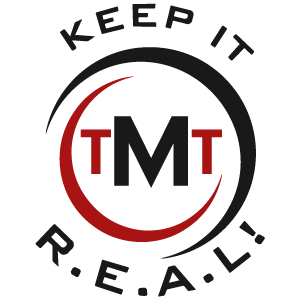In today’s fast-paced business landscape, ensuring reliable and efficient IT services is crucial for success. Managed Service Providers (MSPs) play a vital role in delivering these services, and Service Level Agreements (SLAs) are at the heart of the MSP-client relationship. In this article, we discuss the details of SLAs, their importance in managed services, different types of SLAs, the role they play in fostering strong relationships between MSPs and clients, and how to create effective SLAs. We will also explore the common challenges faced in SLA management.
What Is An SLA?
An SLA is a contract between an MSP and its client that defines the level of service expected and the metrics by which the service will be measured. It serves as a roadmap for delivering consistent and satisfactory IT services, ensuring both parties have clear expectations and understandings.
The Importance Of SLAs In Managed Services
SLAs are integral to the success of MSP-client relationships for several reasons.
- Setting Expectations – An SLA outlines the scope of services, response times, and resolution timelines, setting clear expectations for both parties. This helps avoid misunderstandings and aligns the MSP’s offerings with the client’s needs.
- Benchmarking Performance – SLAs establish measurable metrics to evaluate the performance of the MSP. This allows the client to hold the MSP accountable for service quality and ensures continuous improvement.
- Building Trust – When an MSP commits to specific service levels and meets or exceeds them consistently, it instills trust and confidence in the client. A well-crafted SLA helps build a strong foundation for a long-term partnership.
Key Components Of An SLA
An SLA typically includes the following key components:
- Service Description – This section provides a detailed overview of the services the MSP will deliver, including software support, hardware maintenance, network management, and more.
- Service Level Objectives (SLOs) – SLOs define the performance standards the MSP commits to meeting. They include metrics such as response times, uptime guarantees, and resolution times.
- Roles And Responsibilities – This section outlines the responsibilities of both the MSP and the client, ensuring clarity and accountability.
- Escalation Procedures – In the event of service issues, escalation procedures define the steps for resolving problems and escalating them to higher levels of management if necessary.
- Termination Clause – A termination clause outlines the conditions under which the contract can be terminated by either party, protecting the interests of both the MSP and the client.
An SLA can also include additional sections that address the specific needs and concerns of the client. These sections may cover topics such as data security, disaster recovery, and compliance with industry regulations.
Data security is a critical aspect of any IT service, and an SLA can outline the measures the MSP will take to protect the client’s data. This may include encryption protocols, access controls, and regular security audits to ensure the highest level of protection against cyber threats.
In the event of a disaster, an SLA can define the MSP’s responsibilities in terms of disaster recovery. This may include backup and restoration procedures, offsite data storage, and the establishment of a business continuity plan to minimize downtime and ensure the client’s operations can quickly resume.
Compliance with industry regulations is another important consideration, especially for clients operating in highly regulated sectors such as healthcare or finance. An SLA can outline the MSP’s commitment to adhering to relevant regulations and maintaining the necessary certifications and audits to ensure compliance.
By including these additional sections in an SLA, the MSP, and the client can address specific concerns and ensure that the services provided align with the client’s unique requirements. This level of detail and customization further strengthens the partnership and fosters a sense of confidence in the MSP’s ability to deliver exceptional IT services.
Types Of SLAs
SLAs can be classified into different types based on the nature of the agreement.
Customer-Based SLA
A customer-based SLA is tailored to meet the specific needs and requirements of individual clients. It takes into account factors such as business objectives, industry regulations, and the criticality of systems, delivering personalized service levels to each client. This type of SLA allows MSPs to offer a more customized and focused approach to their services.
When creating a customer-based SLA, the MSP conducts in-depth consultations with the client to understand their unique business processes and objectives. By aligning the SLA with the client’s specific goals, the MSP can ensure that the services provided directly contribute to the client’s success. This personalized approach fosters a strong client-MSP relationship built on trust and collaboration.
Service-Based SLA
A service-based SLA, on the other hand, defines the service levels provided for a specific service rather than being tailored to individual clients. This type of SLA is commonly used when the MSP offers standardized services to multiple clients, allowing for easier scalability and streamlined service delivery.
Standardized services covered under a service-based SLA often include common IT functions such as help desk support, network monitoring, and software updates. By establishing clear service levels for these standardized offerings, MSPs can efficiently manage resources and ensure consistent service quality across their client base. This approach is particularly beneficial for MSPs serving clients with similar IT environments and support needs.
Multi-Level SLA
A multi-level SLA comprises different tiers or levels of service, enabling clients to choose the level of service that best aligns with their needs and budget. These tiers may vary in terms of response times, support availability, and other metrics, offering flexibility and options to clients while ensuring cost-effectiveness for the MSP.
With a multi-level SLA, clients have the flexibility to select a service tier that matches their requirements and budget constraints. For example, a client with mission-critical systems may opt for a higher service tier with 24/7 support and rapid response times, while a smaller business with less critical operations may choose a lower tier with standard support levels. This tiered approach allows MSPs to cater to a diverse range of clients with varying service level expectations, providing a scalable and customizable solution for each client’s unique needs.
The Role Of SLAs In MSP Client Relationships
In addition to defining service levels and expectations, SLAs play a vital role in fostering strong relationships between MSPs and their clients.
Establishing and maintaining a successful partnership between an MSP and its clients goes beyond just delivering services—it involves building trust, communication, and transparency. SLAs serve as the foundation for this relationship, outlining the terms, conditions, and performance metrics that both parties agree to uphold.
Additionally, SLAs act as a roadmap for collaboration, setting the stage for open dialogue and alignment on goals and objectives. By clearly articulating the services to be provided, the responsibilities of each party, and the expected outcomes, SLAs create a shared understanding that forms the basis of a productive and enduring partnership.
Setting Expectations And Boundaries
SLAs clearly outline the services and support provided by the MSP, ensuring that clients are aware of what to expect. By defining boundaries, responsibilities, and response times, SLAs prevent scope creep and help manage client expectations.
These agreements establish a framework for addressing potential issues or conflicts that may arise during the engagement. By proactively defining the parameters of the relationship, both the MSP and the client can navigate challenges more effectively, leading to smoother operations and enhanced trust.
Ensuring Quality Of Service
SLAs enable MSPs to consistently deliver high-quality services by providing actionable metrics and performance standards. This ensures that clients receive the level of service they require and pay for, while the MSP can monitor and continuously improve their service delivery processes.
By incorporating key performance indicators (KPIs) and SLOs into the SLA framework, MSPs can measure their performance against agreed-upon benchmarks. This data-driven approach not only demonstrates the MSP’s commitment to excellence but also allows for ongoing optimization and refinement of service delivery, ultimately benefiting the client’s business operations.
How To Create An Effective SLA
Creating an effective SLA requires careful consideration of various factors to meet the unique needs of each client. Here are the key steps involved.
Identifying Service Requirements
The first step is to understand the specific needs and requirements of the client. This involves conducting a thorough assessment of the client’s IT infrastructure, identifying critical systems, and understanding the desired service levels for each component.
When identifying service requirements, it’s important to engage in detailed discussions with key stakeholders to gain insights into their pain points and priorities. By understanding the client’s business goals and challenges, you can tailor the SLA to address their specific needs effectively. Conducting a gap analysis can help pinpoint areas where the current services may fall short of meeting expectations, enabling you to proactively address potential issues.
Defining Service Standards
Once the requirements are identified, it is crucial to establish clear service standards. This includes determining response times, resolution times, uptime guarantees, and other measurable metrics that align with the client’s objectives and expectations.
When defining service standards, it’s beneficial to incorporate industry best practices and benchmarks to ensure that the agreed-upon metrics are realistic and achievable. Collaborating with the client to set realistic goals can foster a sense of partnership and mutual understanding. Additionally, outlining escalation procedures and communication protocols in the SLA can help manage expectations and ensure a structured approach to handling service issues.
Establishing Performance Metrics
SLAs should include performance metrics that accurately measure the MSP’s service levels. This may involve tracking response times, average resolution times, system availability, and customer satisfaction scores. Regular reporting and reviews of these metrics are essential for maintaining transparency and accountability.
When establishing performance metrics, it’s essential to leverage monitoring tools and systems that provide real-time data on service performance. By implementing automated monitoring processes, you can proactively identify potential issues and take corrective actions swiftly, thereby enhancing the overall service delivery. Conducting periodic service reviews with the client can facilitate continuous improvement and ensure that the SLA remains aligned with evolving business needs.
Common Challenges In SLA Management
Although SLAs are central to the MSP-client relationship, managing them effectively can be challenging. Here are two common challenges.
Monitoring SLA Compliance
Monitoring SLA compliance requires robust tracking mechanisms and regular reporting. MSPs must invest in monitoring tools and processes to accurately measure and report on service levels. Real-time dashboards and automated alerts can help proactively address potential compliance issues.
Handling SLA Breaches
In cases where SLA breaches occur, it is essential to have clear escalation procedures and resolution processes in place. Effective communication, swift problem resolution, and remediation plans are crucial to minimizing the impact on the client and maintaining trust.
Conclusion
SLAs are critical for fostering strong relationships between MSPs and their clients. Through effective SLAs, MSPs can set clear expectations, deliver high-quality services, and continuously improve their offerings. By understanding the different types of SLAs, the key components involved, and the challenges in SLA management, MSPs can forge successful partnerships and provide exceptional IT services to their clients.
While mastering SLAs is vital for service delivery, MSPs must also excel in marketing to attract new clients. Join Technology Marketing Toolkit’s next FREE MSP Marketing Training to learn how to grow your business effectively. Enhance your marketing skills and ensure your MSP stands out by signing up today!


